Changing Places Equipment – What does it need to include?
With over 2,000 Changing Places toilets currently registered across the UK, demand for these types of facilities continues to grow. However, it is essential that any venue looking to install a Changing Places understands how to be compliant with the latest regulations.
To ensure your venue meets the latest guidelines and standards, we’ve put together a handy guide that details everything you need to know about Changing Places equipment.
From highlighting what you must include to meet a standard specification to the different options available to create a more bespoke facility, we will be provide you with the information you need on the healthcare equipment required.
How to be compliant with Changing Places Equipment
Since 2021, most new public buildings are now legally required to have a Changing Places toilet. In order for a facility to meet current guidelines and be registered on the Changing Places map, it must meet a set of criteria.
These sets of rules and regulations fall under the British Standard ‘BS8300:2018‘, a document that highlights how buildings should be designed, constructed and maintained to meet the needs of individuals with disabilities.
Read our blog on the differences between a disabled toilet and a changing places toilet
When a venue or contractor puts in a planning application to install a Changing Places, the rules set out in document BS8300 are essential to abide by, as they ensure a specification meets industry standards.
See the image below to see a standard Changing Places layout and full list of expected equipment.
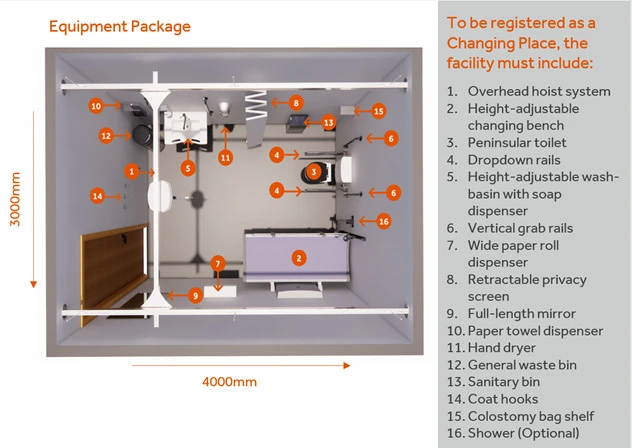
Failure to meet those requirements can result in a facility that isn’t fit for purpose, resulting in venues having to incur additional costs to rectify the issues and ensure they have the correct Changing Places equipment and design.
What can we expect to see in a Changing Places?
We’ve taken a quick look at the regulation behind what a Changing Places needs to include and why.
Now it is time to get to grips with some of the core bits of equipment that every facility needs to include.
Our video below, presented by Innova’s Derek Oliver, provides a great overview of the products included.
Hoist Systems
A staple for any Changing Places toilet is to have full room coverage for an overhead tracked hoist system, which can either be ceiling or wall mounted.
To ensure it provides flexibility for different individuals, the room structure and track must be able to safely support a safe working load of 200kg.
As an experienced hoisting system and Changing Places provider, Innova provide their AirRise 200 hoist unit and Airglide360 track for the majority of the hoist systems they install for Changing Places.
Not only does this hoisting package eliminate the risk of strain injuries for carers whilst lifting an individual manually, it also minimises risk of injury to the person being transferred.
It is also worth noting that the AirRise range features soft-start and soft-stop technology, meaning that users avoid jerky or unsettling movements. The hoist units are also fitted with Battery Protection Software, ensuring the batteries stay in prime condition long-term and notifies users when it need charging.
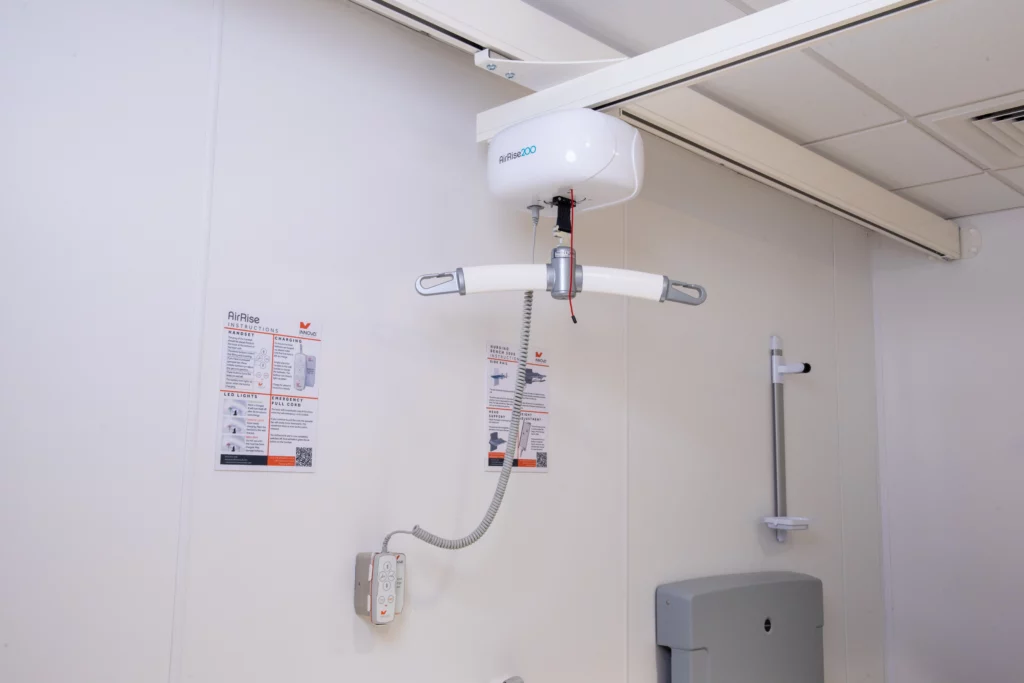
In addition, due to manoeuvrability provides, it also makes it much easier to access a changing bench, safeguarding the dignity of those who require care.
Changing Bench
Another key item to tick off your Changing Places equipment list should be a mobile or fixed changing bench. Capable of operating at a safe working load of 200kg, changing benches whether mobile or fixed, need to be height adjustable.
For individuals who use incontinence pads or require help undressing to use the toilet, changing benches are vital in providing a comfortable and stable platform, helping to make hygiene routines easier and more dignified.
In addition, for those facilities where a shower is fitted, the covering of the changing bench should be suitable for use when a person is showering as well as changing.
With Innova, they offer options for both mobile and fixed changing benches, which can be found in either a 3m or 4m length. An example can be seen below of a Changing Bench 3000 that includes an integral water collection tray and adjustable head support, making the bench easier to clean.
Mobile changing benches can be moved easily and with their fold down sides, ensure access can be gained from both sides of the bench, increasing convenience for the caregiver.
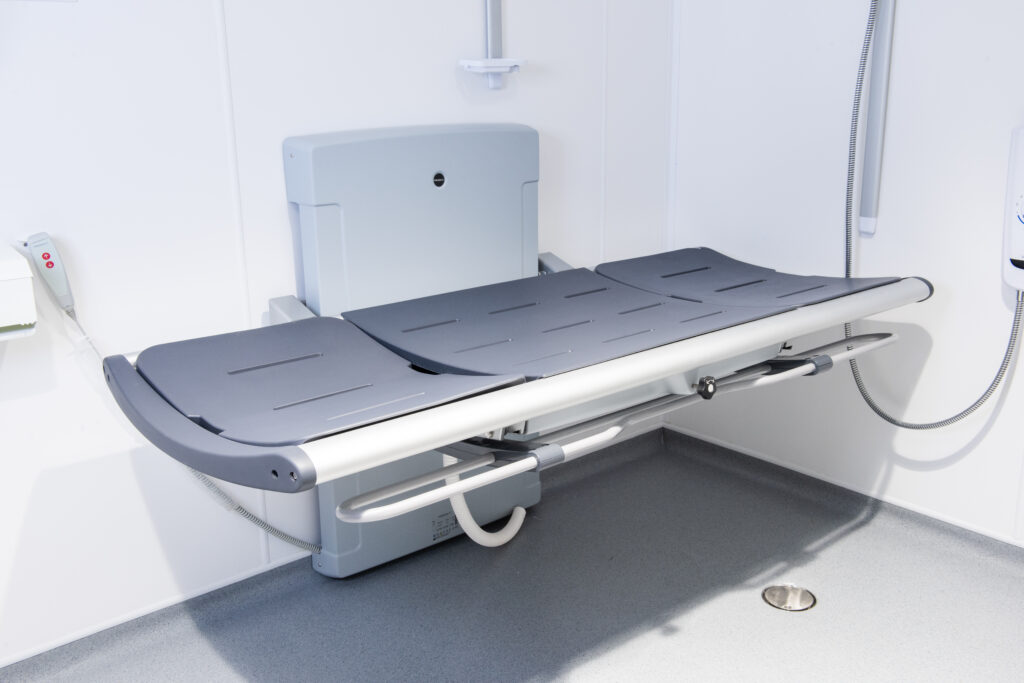
Fixed changing benches are great for venues who need to maximise space for their Changing Places. There is also the added benefit that fixed changing benches are often mains powered, so it reduces worries about battery life and charging.
Peninsular Toilet
When putting together a design for a Changing Places facility, it is crucial that the toilet should be sticking out like a “peninsular”, so that it is at least a metre away from the walls on either side. The reason for this is to create space on both sides of the toilet, allowing wheelchair transfers or assistance from caregivers.
Another consideration to note is that seats with a gap at the front should not be used. This is because this type of shape can make it difficult for people to transfer and the gap is a potentially a risk hazard.
For venues looking for a more high-end look and feel, there are options to include an automatic wash-and-dry toilet. These are not a standard requirement for a Changing Places but can help create a more premium look and feel to your facility.
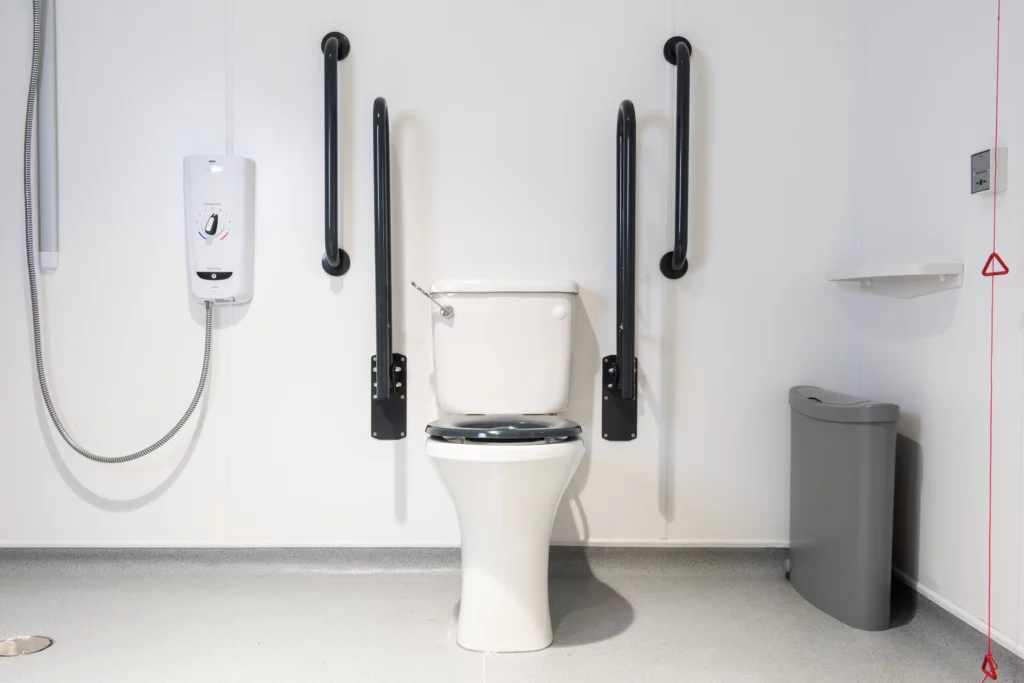
Wash Basin
Looking at your Changing Places equipment checklist, a wash basin with a clear knee space below the bowl is a must. The purpose of this requirement is to have a basin that enables a wheelchair user to comfortably use it.
At Innova, our recommendation for Changing Places is to opt for electric height-adjustable wash basins.
By going for this option of wash basin, users have more independence by having controls that can adjust the height of the basin.
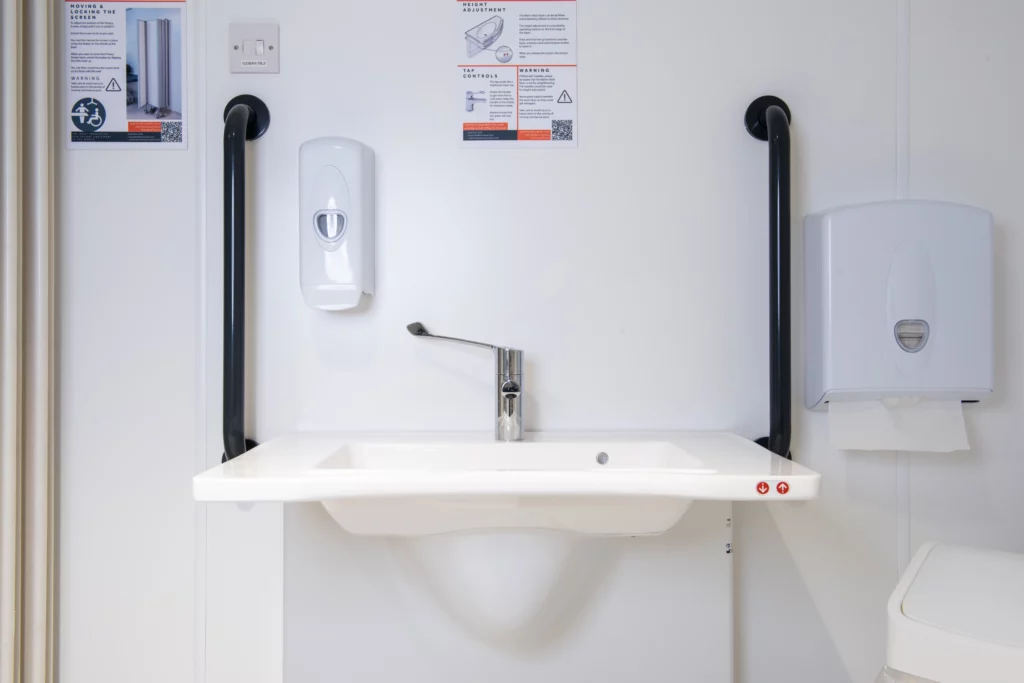
In addition, this basin can also be moved from side to side along a horizontal wall mounted track, enabling individuals to access it while seated on the toilet.
Alternatively, it can also be moved away to allow space for carers to stand on either side of the toilet.
Privacy Screen
An item on the Changing Places equipment list that is often overlooked is the inclusion of a privacy screen. Changing Places are designed with enhancing the dignity of individuals so it makes absolute sense to include provision that supports that goal.
Compatible with overhead hoist systems, our privacy screens usually include an easy-clean surface and sturdy castors for added durability.
They are available as either freestanding screens or wall mounted retractable privacy screens, with the latter offering the most flexibility to users of the toilet.
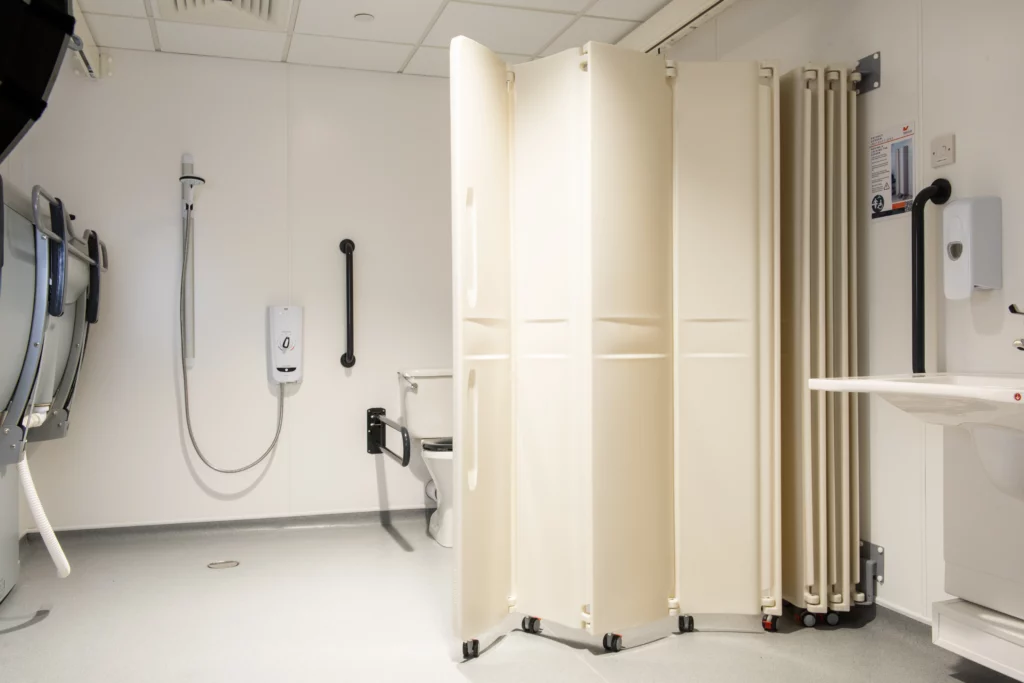
Necessary Changing Places Items
Alongside your key features that make up a Changing Places toilet, there is also a list of smaller pieces of equipment that you need to include.
These include:
– Fixed vertical grabrails
– Wide paper dispensers
– Waste bins
– Sanitary bins
– Coat hooks
– Full-length mirror
– Hand dryer
– Colostomy bag shelf
One item that is often a popular option to include is a shower. Although not a requirement in a Changing Places, they can make a huge difference in terms of hygiene and are easy to install.
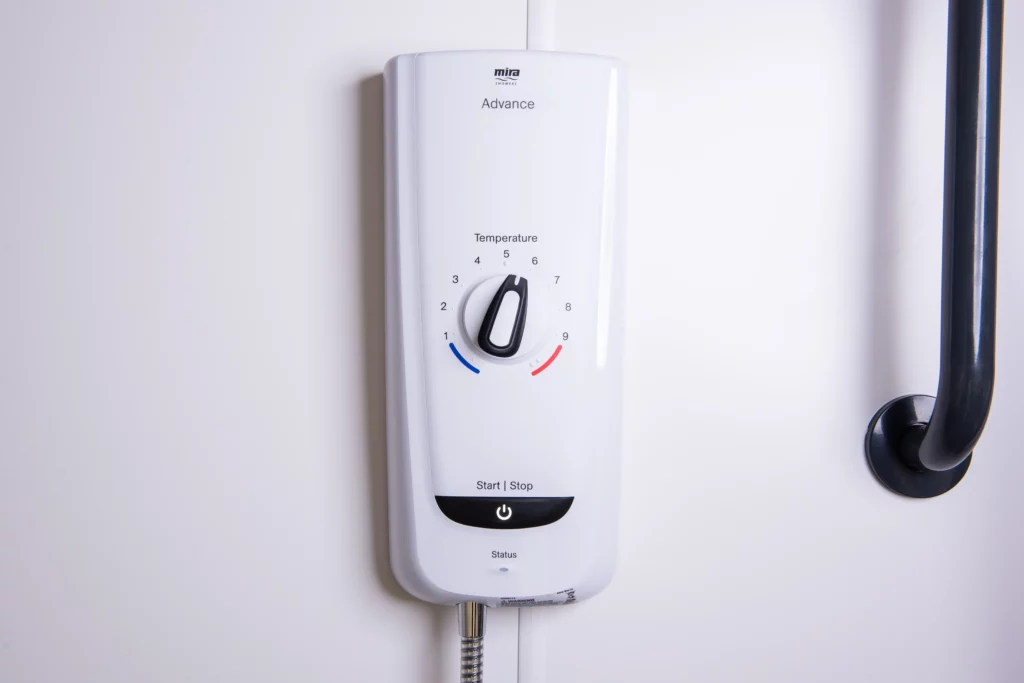
If a shower is on your preference sheet, we’d recommend putting the shower away from the door to avoid the entrance becoming wet. We’d also advise having a freestanding changing bench and a shower seat, enabling the showering facilities to be used by a range of people.
Regarding the shower area, the shower should be wall-mounted between 750mm and 1000mm above the floor level, making easy to access for wheelchair users and carers.
The floor needs to also be non-slip and the drains should be recessed into the floor with a low profile, reducing the potential of trip hazards.
Summary
As mentioned at the beginning of the blog, ensuring your Changing Places facility is compliant can be a tricky process.
However, by working with approved suppliers like Innova and the Changing Places Consortium, you can reduce the risk of making costly mistakes in the design, specification and installation of your facility.
This is especially important with Changing Places equipment provision, ensuring you have the right spec for your core and secondary items. By getting the little details right, you are reducing the risks of your facility not being compliant and speeding up the process of making your venue more accessible and inclusive.
To get expert advice on your Changing Places project, complete the contact form below.
Can we help with anything?
Be sure to use the contact form and reach out to us if you have any questions about the content above.